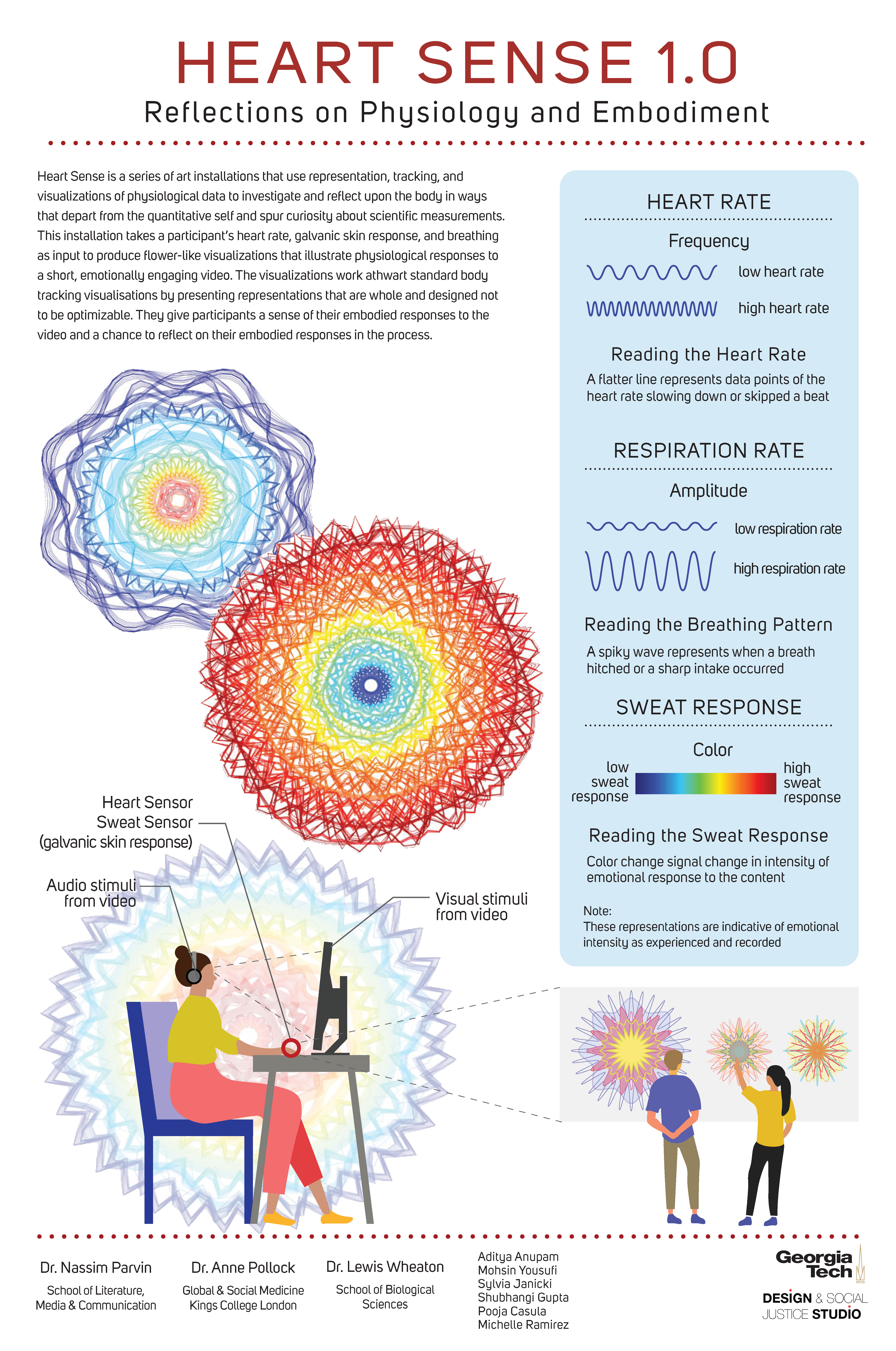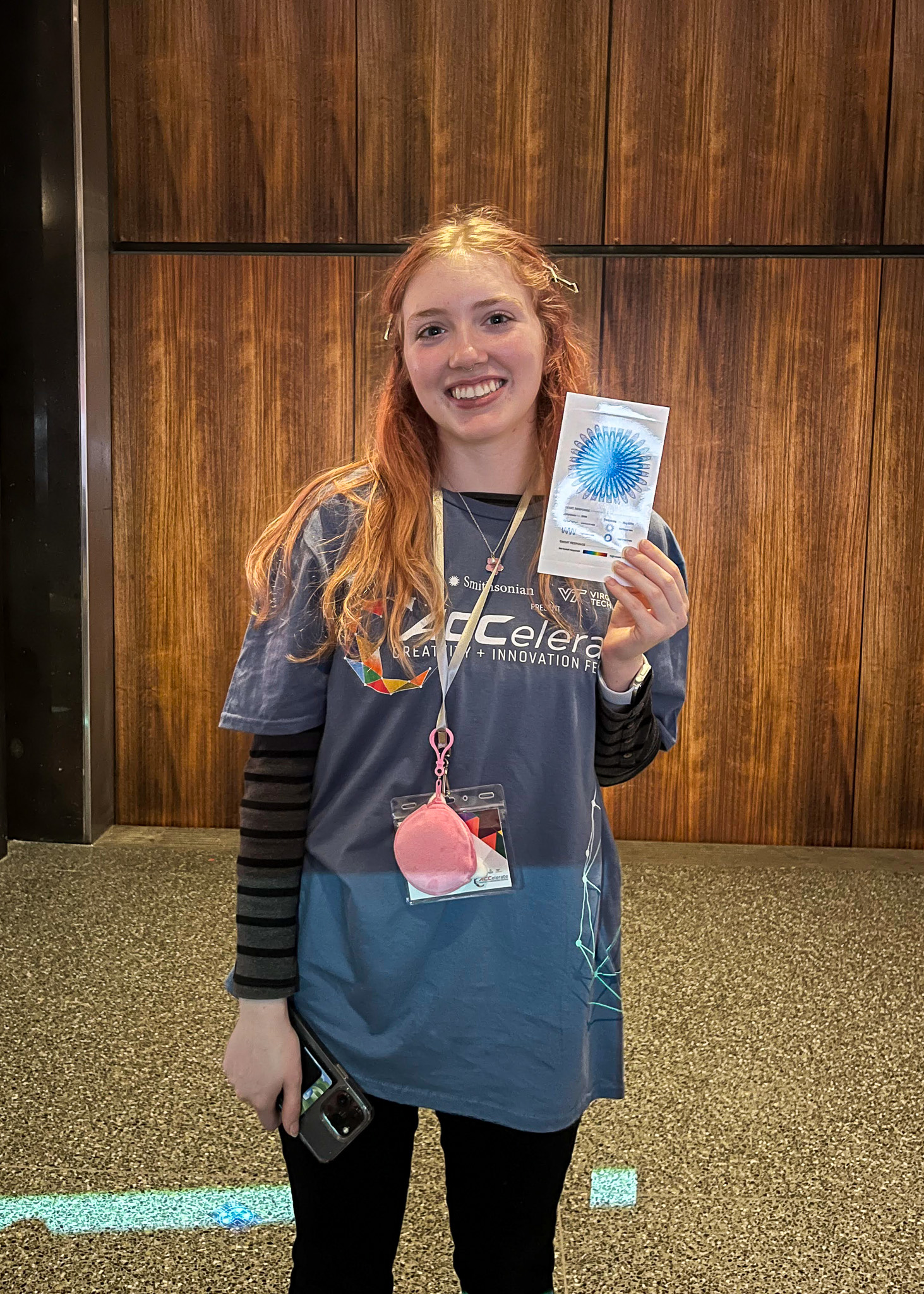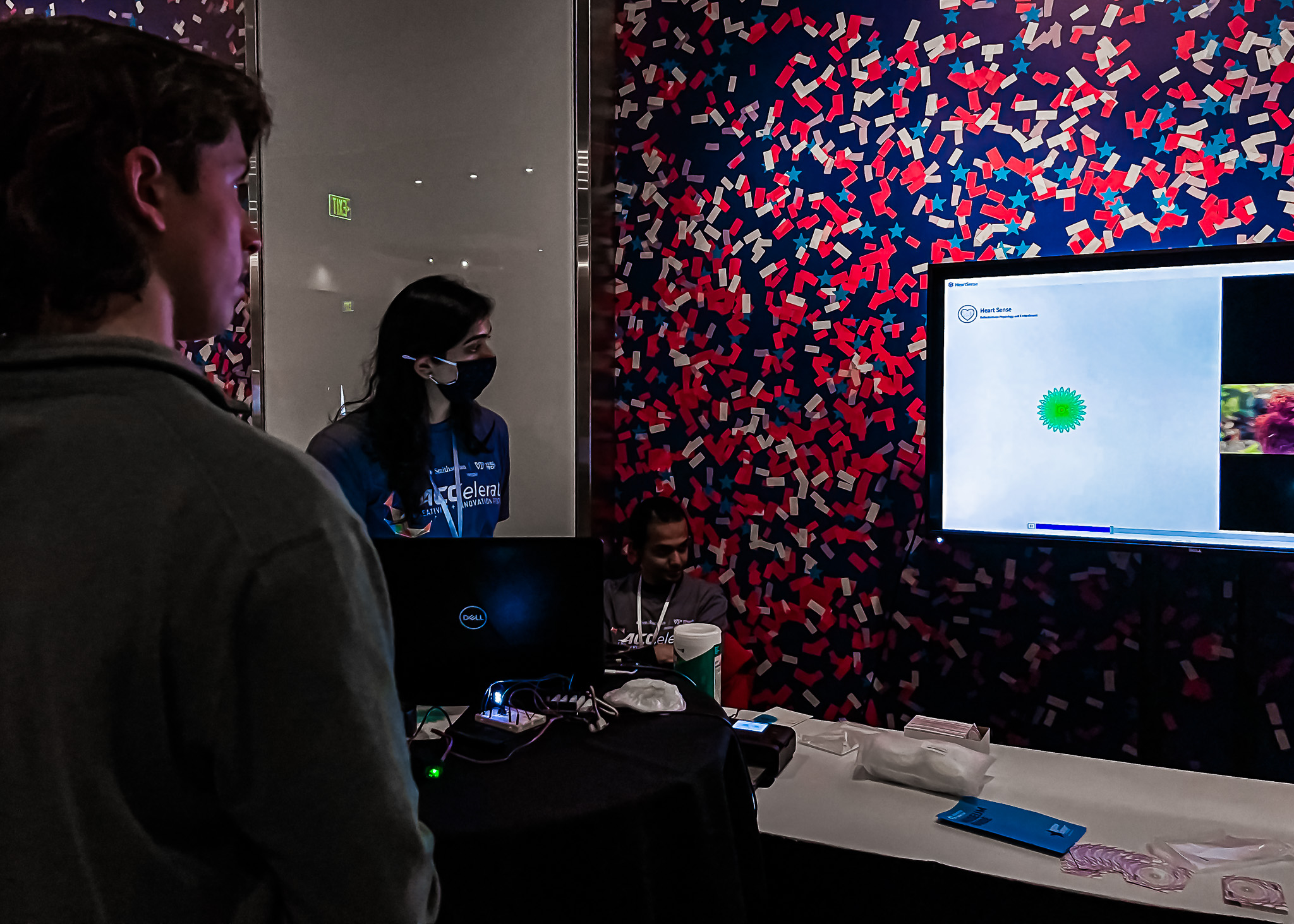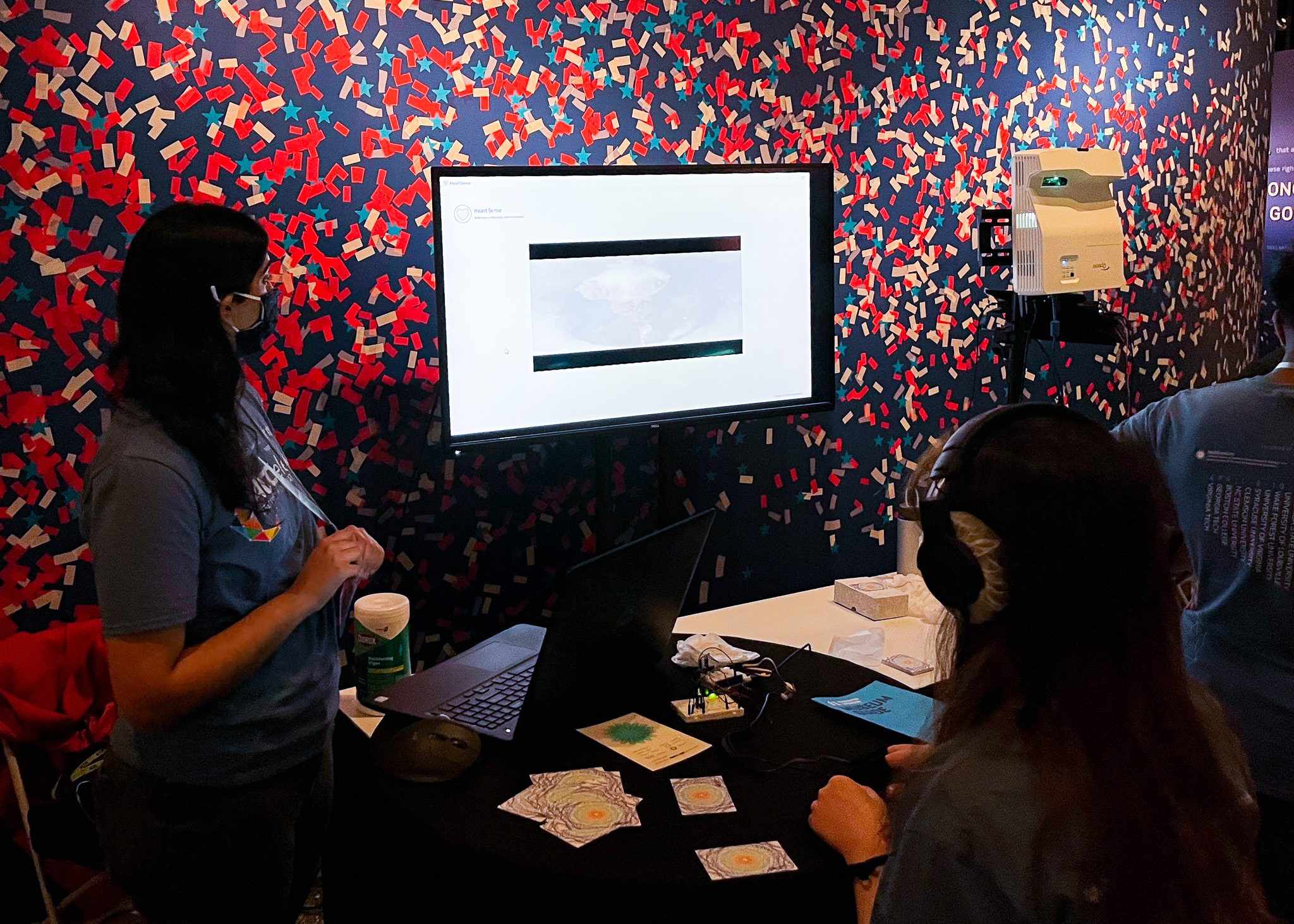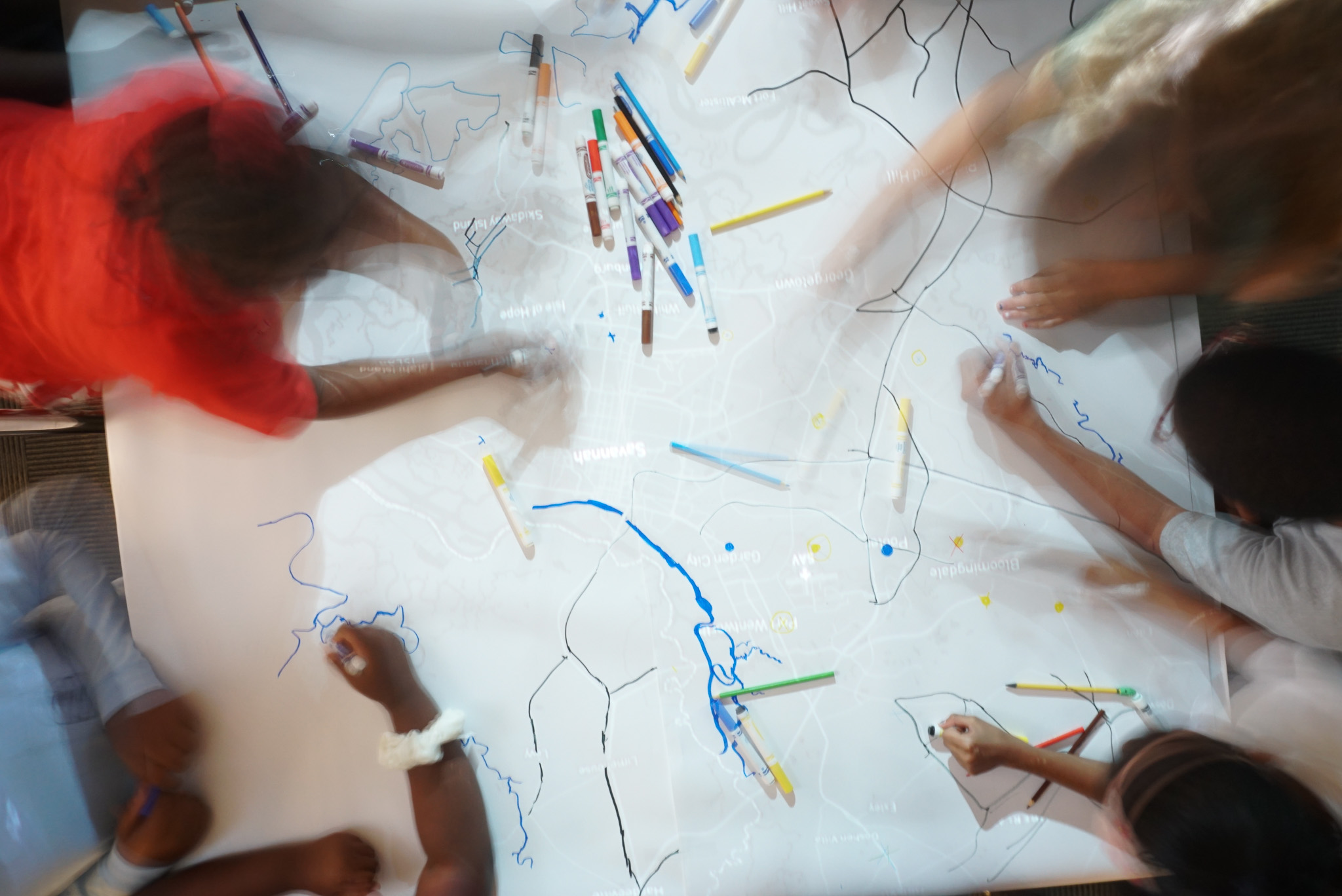03 HEart Sense
SEP21-JUN22
A Design-based Inquiry into the Physiology of Embodiment
Heart rate data is a meaningful platform for feminist engagement with data, matter, and meaning. It provides a conduit for understanding physical and metaphysical complexity, as well as our interconnectedness with personal, social, and environmental aspects of life. Thus, it offers feminists a unique opportunity to explore the power of data, the meaning of matter, and the significance of meaning.
Two installations were created that each provided a point for collective and individual inquiry.
1. Three Participants sit around a table with headphones to listen to music. A floral visualization of individual & collective heart rates will be projected onto the table, size & colors of petals shifting with changes in body. Visualization showcases how bodies relate to each other & the environment, responding to conditions even when unaware. Floral form takes inspiration from trillium, individual flowering bodies connected by underground rhizome roots.
2. This installation takes a participant’s heart rate, galvanic skin response, and breathing as input to produce flower-like visualizations that illustrate physiological responses to a short, emotionally engaging video. The visualizations work eschew standard body tracking visualisations by presenting representations that are whole and designed not to be optimizable. They give participants a sense of their embodied responses to the video and a chance to reflect on their embodied responses in the process. Each heart visualization displays a person's physiological response to watching an emotionally-engaging video. Different physiological characteristics (heart rate, galvanic skin response, and breathing patterns) were used as variables to create a flower-like visualization.

Contribution
I was primarily responsible for leading the second installation, which provided an opportunity for individual reflection. Using p5.js, I coded the visualization that took in a participant's heart rate and responsiveness through a heart sensor and a galvanic skin sensor and dynamically updated the visualization. The heart rate sensors are notoriously finicky in getting readings, so I had to reprogram the algorithms to rely on the shortest possible measurements while staying accurate to the user. Additionally, each individual's range of heart rate and sweat response is unique, so the program had to account for that as well.I also had to build the user input interface, using Arduino, Heart Rate sensors, and GSR, that was robust enough to withstand a high rate of turnover as we were exhibiting this in a venue that was expected to receive well over thousands of visitors over a period of 3 days. The challenge was to keep the installation low-cost, portable (so it could be shipped from Atlanta to D.C.), and reliable for bodies ranging from toddlers to elderly, to give each user a fair experience. The program also had to be minimally technical so it could be operated by others from the start of the measurements to the final print that each visitor was provided with. I was successfully able to automate the process, leaving only simple "Next" interactions for the users.
I also contributed to the first project by assisting the team in the building the installation and maintaing the code.
The project was presented at the 2022 ACCelerate Festival at the Smithsonian’s Museum in Washington D.C. and was voted the runner-up for the "Favourite Exhibit".
For further readings: https://heart.gatech.edu
